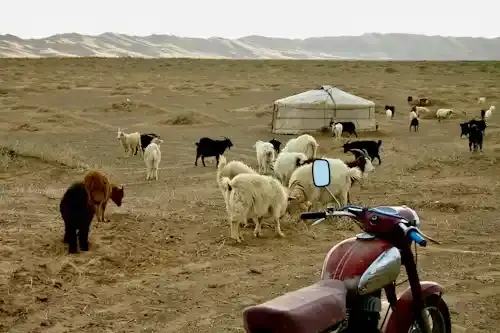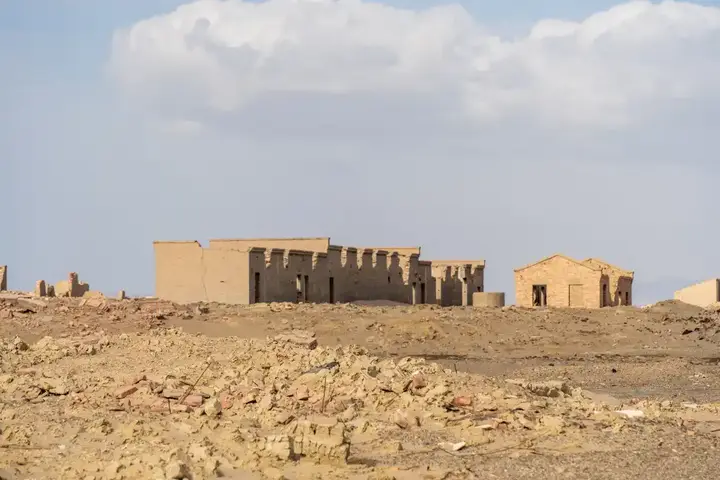Discovering Mongolia's wild beauty: your guide to the Gobi Desert
Located in the heart of Asia, Mongolia is a country characterized by its pristine nature and rich culture. Between green plains and towering mountains, lies one of the most exciting regions in the world: the Gobi Desert. This desert is not just vast expanses of sand, it is an amazing blend of natural and cultural environments that captivate everyone who visits it. If you're a fan of trekking and adventure, the Gobi Desert is the perfect destination for you. In this article, we will take you on a tour to discover the beauty of the Gobi Desert and how to explore it in all its details.
Show key points
- The Gobi Desert, stretching across southern Mongolia and northern China, covers over
- 3 million square kilometers and features diverse landscapes from sand dunes to rocky mountains.
- Despite being a cold and arid desert, the Gobi supports unique wildlife such as mountain ibex, Mongolian deer, and two-humped camels, along with rare desert-adapted plants.
- ADVERTISEMENT
- Popular tourist attractions in the Gobi include Khongoryn Els ("singing dunes"), the Flaming Cliffs known for dinosaur fossils, and the ancient ruins of Ongii Monastery.
- Travelers are advised to plan ahead, bring suitable gear for extreme weather, and consider safety measures like traveling with guides and using satellite communication.
- Cultural sensitivity is important, and visitors are encouraged to respect local traditions, learn basic Mongolian phrases, and appreciate the hospitality of nomadic communities.
- Activities such as camel riding, camping under a starry sky, and exploring both natural and archaeological sites enrich the Gobi Desert adventure.
- With its combination of natural beauty, biodiversity, and cultural heritage, the Gobi offers an unforgettable experience for enthusiasts of ecotourism and exploration.
Gobi Desert: Overview

The Gobi Desert spans an area of more than 1.3 million square kilometers, making it one of the largest deserts in the world. Stretching from northern China to southern Mongolia, it features diverse terrain ranging from sand dunes and dry valleys to rocky mountains and high plateaus. Although Gobi is a cold desert, with temperatures ranging from extreme cold in winter to dry heat in summer, life thrives with various forms of fauna and flora adapted to the harsh conditions.
Recommend
Gobi biodiversity

The Gobi Desert may be barren and desolate on its surface, but it is home to a number of organisms not seen anywhere else. Despite the scarcity of water and plants, many species of animals have been able to adapt to extreme conditions. Among these animals are:
Mountain ibex: They live in the mountainous areas of Gobi, and feed on rare plants that grow in these areas.
Mongolian deer: It is considered one of the national symbols of Mongolia, and is found in open plains and valleys where it feeds on grasses and shrubs.
Camels with two humps: It is a symbol of the desert, characterized by its ability to withstand drought conditions and extreme heat.
In addition to animals, the Gobi Desert includes rare plants adapted to survive in a harsh environment, such as dwarf shrubs and desert grass.
Tourist sites in the Gobi Desert

1. This national park is one of the most prominent areas in Gobi, and it extends over a vast area of sand dunes, plateaus and valleys. The park is home to a variety of wild animals, such as snow leopards and wild ibex. Visitors can enjoy safari trips and camping in nature.
2.Yulin Am Valley:
Photography.
3.Khonjurian Els Dunes:
These dunes are also known as "diva dunes" because of the sound produced by the wind when it blows on the sand. The dunes rise up to 300 meters and are considered one of the largest sand dunes in Mongolia. Here you can try camel riding or stroll along the dunes to see stunning views of the sunrise and sunset.
4. Flaming Cliffs Rock:
This rock, famous for its bright red color, is considered one of the most important excavation sites in the world. Here many dinosaur remains were discovered, and it is considered an archaeological site of great historical importance. Visitors can enjoy field tours to learn about the geological history of the desert.
5. Ungyi City:
It is an important archaeological site in Gobe, and it contains the remains of centuries-old Buddhist temples. Visitors can enjoy a historical and cultural tour, learning about the ancient Mongolian culture.
How to prepare for a trip to Gobi

Before embarking on an adventure to the Gobi Desert, it is essential to prepare well to ensure a safe and enjoyable experience. Here are some tips:
1. Advance Planning:
It is advisable to plan the trip well in advance, including booking transportation and accommodation. It is preferable to travel with experienced local guides who know the area well.
2. Necessary equipment:
Due to extreme weather conditions, it is advisable to wear multi-layered clothing to adapt to temperature changes. Camping equipment, water and adequate food must be brought for the trip.
3.Safety:
It is important to be aware of the dangers of trips in the desert, such as sandstorms and isolation from populated areas. It is advisable to take modern means of communication such as satellite phones.
4. Adapting to the local culture:
Visitors should respect the local traditions and culture of the Gobi people, especially when visiting sacred sites or dealing with Bedouin residents. Learning some basic phrases in Mongolian can be very helpful.
Things to Do in Gobi

The Gobi Desert offers a unique experience for visitors, combining adventure and relaxation. Here are some things to enjoy:
Camel Rides:
This experience is one of the most enjoyable activities in the desert, where you can enjoy camel tours to explore the sand dunes and plateaus.
Camping under the stars:
Gobi is one of the best places in the world to see the stars clearly due to the lack of light pollution. Camping in the desert offers an opportunity to enjoy the starry sky at night.
Interaction with local people:
Mongolian nomads are an essential part of the Gobi experience. You can spend time with Bedouin families and learn about their traditional lifestyle, as well as sample local foods such as lamb and dairy products.
Visiting cultural sites:
In addition to enjoying nature, you can visit historical and cultural sites such as ancient Buddhist temples and historical monuments scattered in the area.








